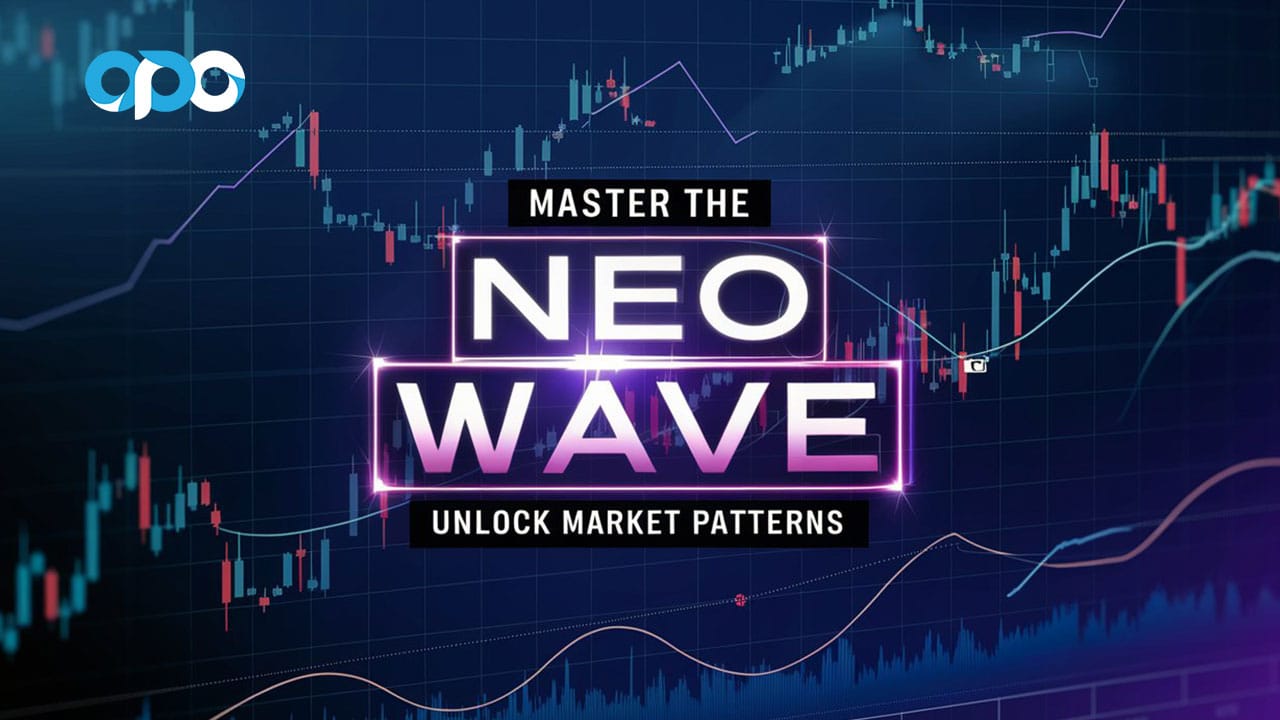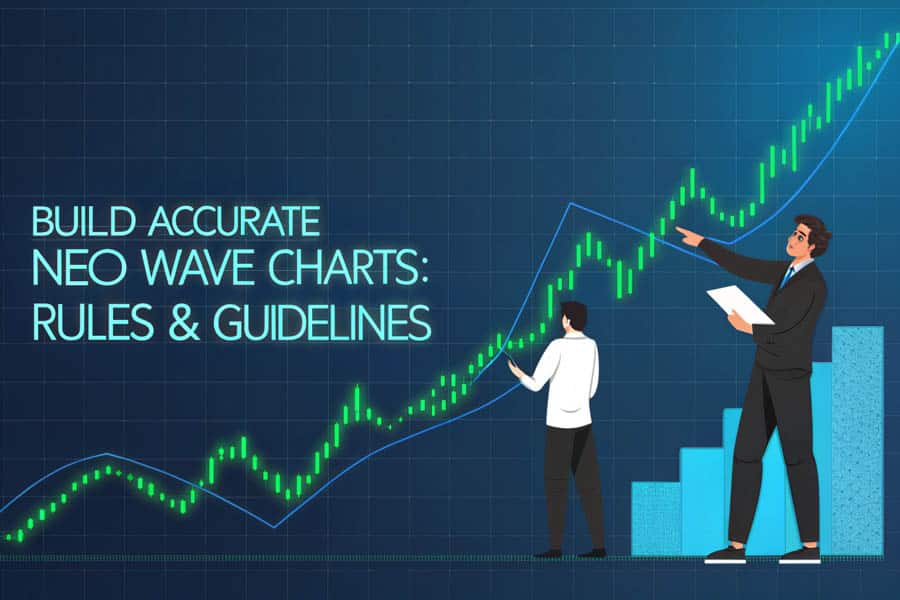Are you searching for a more objective and accurate way to analyze the complexities of the financial markets? The Neo Wave Trading Strategy, an advanced form of technical analysis, offers a powerful lens through which to understand market behavior. This article will delve deep into the intricacies of the neo wave pattern and neo wave theory rules, providing you with the knowledge to potentially enhance your trading decisions. We’ll explore how this sophisticated approach, rooted in the Elliott Wave Theory, can offer a more nuanced understanding of market movements, helping you navigate the often-turbulent waters of trading. For those seeking a robust framework, understanding the Neo Wave Analysis in Trading can be a game-changer, especially when choosing the right forex broker to execute your strategies.

Understanding the Power of the Neo Wave Trading Strategy

In the dynamic world of financial markets, traders constantly seek an edge, a method to decipher the seemingly random fluctuations of price. While numerous technical analysis tools exist, the Neo Wave Trading Strategy stands out as a sophisticated approach designed to bring greater objectivity and precision to market forecasting. This methodology, an evolution of the well-known Elliott Wave Theory, offers a more structured and rule-based framework for understanding market psychology and identifying potential turning points.
Definition and Significance of Neo Wave Theory in Trading
At its core, the Neo Wave Theory is a form of technical analysis that attempts to forecast market direction by interpreting specific wave patterns on price charts. Unlike simpler methods that might focus on isolated indicators, Neo Wave considers the entire sequence of price movements, identifying specific formations that suggest future trends. Its significance lies in its attempt to move beyond the inherent subjectivity often found in traditional Elliott Wave analysis, providing clearer guidelines for wave identification and interpretation. By understanding the underlying structure of market movements, traders can potentially identify high-probability trading opportunities and manage risk more effectively. The application of the Neo Wave Trading Strategy can significantly refine a trader’s approach.
Read More: Elliott Wave Strategy
Evolution from Elliott Wave Theory to Neo Wave Theory
The Neo Wave Theory, pioneered by Glenn Neely, is a direct descendant of the Elliott Wave Theory, developed by Ralph Nelson Elliott in the 1930s. Elliott observed that market prices tend to move in specific patterns, which he called “waves.” While groundbreaking, the original Elliott Wave Theory was often criticized for its subjective nature, leading to varying interpretations among analysts. Neely addressed this by introducing a more rigorous set of rules and guidelines, aiming to eliminate ambiguity and enhance the predictive power of wave analysis. The evolution to Neo Wave involved refining wave definitions, introducing new pattern classifications, and emphasizing the importance of time and proportionality in wave formations. This evolution aimed to create a more objective and reliable framework for traders seeking to understand the underlying structure of market trends. Understanding the nuances of the neo wave pattern is key to this evolution.
Decoding the Core of Neo Wave Theory

To effectively utilize the Neo Wave Trading Strategy, a solid understanding of its foundational principles is crucial. This section will delve into the origins of the theory and the key concepts that distinguish it from its predecessor, the Elliott Wave Theory.
Origins and Development by Glenn Neely
Glenn Neely, a renowned technical analyst, is the architect of the Neo Wave Theory. Through years of research and practical application, Neely identified the limitations of the traditional Elliott Wave Theory and sought to create a more objective and rule-based system. His work involved meticulously defining wave structures, introducing new pattern classifications, and emphasizing the importance of specific rules that must be met for a valid wave count. Neely’s contributions have significantly advanced the field of wave analysis, providing traders with a more structured and potentially more reliable tool for market forecasting. The development of the neo wave theory rules was a significant step in this process.
Key Principles Distinguishing It from Traditional Elliott Wave Theory
Several key principles differentiate Neo Wave from traditional Elliott Wave Theory:
- Increased Objectivity: Neo Wave emphasizes strict rules and guidelines for wave identification, reducing the subjectivity inherent in traditional Elliott Wave analysis. This means less room for interpretation and potentially more consistent analysis among different practitioners.
- Specific Pattern Definitions: Neo Wave introduces precisely defined patterns, such as the Neutral Triangle and Diametric Formation, with specific rules governing their formation and implications. This contrasts with the broader and sometimes more ambiguous pattern definitions in traditional Elliott Wave.
- Emphasis on Time and Proportionality: Neo Wave places significant importance on the time taken for waves to form and the proportional relationships between different waves. These factors are crucial for validating wave counts and projecting future price movements.
- Focus on Complexity: Neo Wave acknowledges and addresses the complex and overlapping nature of market movements, providing tools to analyze intricate wave structures that might be difficult to interpret using traditional Elliott Wave principles.
- Validation Rules: Neo Wave incorporates specific validation rules that must be met for a wave count to be considered valid. This adds a layer of rigor and helps to filter out potentially incorrect interpretations.
These distinctions make the Neo Wave Theory Application a more structured and potentially more reliable approach for traders seeking to understand and profit from market patterns. The Neo Wave Analysis in Trading benefits significantly from these principles.
Essential Components of Neo Wave Analysis
Understanding the building blocks of the Neo Wave Trading Strategy is essential for its effective application. This section will introduce the core components, including different types of waves and the crucial role of time in the analysis.
Definition of Waves, Monowaves, and Complex Waves
In Neo Wave Theory, price movements are categorized into different types of waves:
- Waves: The fundamental building blocks of Neo Wave analysis. A wave represents a directional movement in price.
- Monowaves: The simplest form of a wave, consisting of a single directional move. These are the smallest identifiable units in a Neo Wave count.
- Complex Waves: Waves that are composed of multiple smaller waves. These represent more intricate price movements and are a key focus of Neo Wave analysis. Understanding how monowaves combine to form complex waves is crucial for interpreting market structure.
Introduction to Polywaves, Multiwaves, and Macro-waves
As the complexity of market movements increases, Neo Wave Theory introduces higher-order wave classifications:
- Polywaves: Formed by the combination of multiple complex waves. These represent significant trends in the market.
- Multiwaves: Composed of several polywaves, indicating even larger and longer-term market movements.
- Macro-waves: The highest level of wave classification, encompassing extremely long-term market cycles.
Understanding these hierarchical wave structures allows traders to analyze market movements across different timeframes and identify trends within trends. This multi-layered approach is a hallmark of the Advanced Elliott Wave Techniques employed in Neo Wave analysis. The identification of these waves is fundamental to the Neo Wave Trading Strategy.
Importance of Time and Pattern Duration in Analysis
Time plays a critical role in validating Neo Wave patterns. The duration of each wave and the proportional relationships between the time taken for different waves to form are crucial factors in determining the validity of a wave count. Neo Wave theory emphasizes that the time element must align with the expected pattern development. For instance, corrective waves typically take longer to unfold than impulsive waves. Analyzing the time taken for each wave to complete helps to confirm the identified pattern and project potential future price movements. This focus on time is a significant differentiator from some other forms of technical analysis and contributes to the increased objectivity of the Neo Wave Theory Application. The neo wave pattern analysis heavily relies on this temporal aspect.
Read More: Elliott Wave vs Neo Wave
Unveiling Key Neo Wave Patterns

The Neo Wave Trading Strategy relies on the identification of specific, well-defined patterns. Understanding these patterns is crucial for applying the theory effectively. This section will explore some of the key formations recognized in Neo Wave analysis.
Neutral Triangle
The Neutral Triangle is a sideways corrective pattern characterized by five overlapping waves. Unlike contracting triangles, the trend lines connecting the highs and lows of a Neutral Triangle are roughly parallel or slightly diverging. This pattern typically indicates a period of consolidation before the previous trend resumes. Identifying a Neutral Triangle can provide traders with an opportunity to prepare for the continuation of the prior trend once the pattern completes. Recognizing this neo wave pattern is crucial for strategic trading.
Diametric Formation
The Diametric Formation is a seven-legged corrective pattern labeled as A-B-C-D-E-F-G. This pattern is characterized by alternating zigzags and flat corrections. It often appears after a strong impulsive move and represents a complex form of consolidation. Recognizing a Diametric Formation can help traders understand that the preceding trend is likely to resume after the pattern completes. The specific rules governing the proportional relationships between the legs of the Diametric are crucial for its accurate identification. Applying the neo wave theory rules is essential for correctly identifying this formation.
5th Failure Terminal
The 5th Failure Terminal is a specific type of ending diagonal that occurs as the final wave of an impulsive sequence. Unlike a typical ending diagonal, the fifth wave in a 5th Failure Terminal fails to reach the end of the third wave. This pattern often signals the exhaustion of the current trend and a potential reversal. Identifying a 5th Failure Terminal can provide traders with a high-probability setup for trading against the prevailing trend. This is a powerful application of the Neo Wave Trading Strategy.
3rd Extension Terminal
The 3rd Extension Terminal is another variation of an ending diagonal, but it occurs as the third wave of an impulsive sequence. In this pattern, the third wave extends significantly and forms a diagonal shape. This pattern suggests that the market is experiencing strong momentum in the direction of the third wave, but the diagonal formation indicates a potential slowing of that momentum and a possible correction to follow. Recognizing a 3rd Extension Terminal can help traders anticipate a potential pullback after the pattern completes. Understanding these patterns is vital for effective Neo Wave Analysis in Trading.
Understanding these specific patterns and their implications is fundamental to effectively utilizing the Neo Wave Analysis in Trading.
Read More: price action vs Elliott wave
Constructing Your Neo Wave Charts: Rules and Guidelines

Accurate chart construction is paramount for successful Neo Wave Trading Strategy implementation. This section outlines the essential rules and guidelines for building reliable Neo Wave charts.
Utilizing Equal Time Periods for Analysis
Consistency in the timeframes used for analysis is crucial in Neo Wave. Using equal time periods for plotting price movements ensures that the wave structures are comparable and that the proportional relationships between waves can be accurately assessed. Switching between drastically different timeframes can distort the perception of wave patterns and lead to incorrect interpretations. Whether you are analyzing daily, hourly, or 15-minute charts, maintaining consistency in the chosen timeframe is essential for accurate Neo Wave Theory Application. This adherence to neo wave theory rules is critical.
Plotting Highs and Lows Accurately
The precise plotting of highs and lows is fundamental to identifying valid Neo Wave patterns. Inaccurate plotting can lead to misidentification of wave starts and ends, invalidating the entire wave count. Traders should pay meticulous attention to identifying the exact highest and lowest points of each wave. Using reliable charting software and double-checking the plotted points can help ensure accuracy. This meticulousness is key to successful Neo Wave Analysis in Trading.
Identifying Significant Points and Proportionality
Beyond simply plotting highs and lows, identifying significant turning points and assessing the proportionality between different waves is crucial. Neo Wave Theory emphasizes the mathematical relationships between waves, both in terms of price and time. For example, corrective waves often retrace a specific percentage of the preceding impulsive wave. Identifying these proportional relationships helps to validate the wave count and project potential future price targets. Understanding these relationships is a key aspect of the Advanced Elliott Wave Techniques used in Neo Wave analysis. The neo wave pattern identification relies heavily on this.
Actionable Strategies: Applying Neo Wave in Your Trading

The true power of the Neo Wave Trading Strategy lies in its practical application. This section explores how to integrate Neo Wave patterns with other tools and develop effective trading strategies.
Combining Neo Wave Patterns with Other Technical Indicators
While Neo Wave provides a robust framework for market analysis, combining it with other technical indicators can enhance its effectiveness and provide additional confirmation for trading signals. For example, using oscillators like the RSI or MACD can help confirm potential reversals identified by Neo Wave patterns. Similarly, volume analysis can provide insights into the strength of a trend and the likelihood of a pattern completing as expected. Integrating Neo Wave with other forms of technical analysis can lead to more robust and higher-probability trading setups. This synergistic approach enhances the power of the Neo Wave Trading Strategy.
Developing Enhanced Trading Strategies
By understanding the underlying wave structure identified through Neo Wave analysis, traders can develop more sophisticated and targeted trading strategies. For instance, identifying a completed corrective pattern can signal an opportunity to enter a trade in the direction of the anticipated impulsive move. Recognizing a terminal pattern can provide a high-probability setup for a counter-trend trade. The specific rules and guidelines of Neo Wave allow for the development of precise entry and exit points, as well as the setting of appropriate stop-loss levels based on the identified wave structure. The application of the neo wave theory rules is crucial here.
Case Studies Demonstrating Successful Implementation
While specific numerical data on the success rate of Neo Wave is difficult to quantify due to its subjective application, numerous anecdotal accounts and case studies highlight its potential. Traders who have diligently studied and applied Neo Wave principles often report improved accuracy in identifying market turning points and managing risk. For example, identifying a Diametric Formation correctly can allow a trader to anticipate the resumption of a strong trend, leading to profitable trades. Similarly, recognizing a 5th Failure Terminal can provide an early signal of a potential trend reversal, allowing for timely entry into counter-trend positions. While past performance is not indicative of future results, these examples illustrate the potential benefits of mastering the Neo Wave Theory Application. These examples showcase the practical benefits of understanding the neo wave pattern.
The Edge of Neo Wave: Advantages Over Traditional Elliott Wave
The Neo Wave Trading Strategy offers several key advantages over its predecessor, the traditional Elliott Wave Theory. These advantages contribute to its potential for increased accuracy and objectivity in market analysis.
Increased Objectivity and Reduced Subjectivity
One of the primary criticisms of traditional Elliott Wave Theory is its inherent subjectivity, which can lead to different analysts interpreting the same chart in various ways. Neo Wave addresses this by introducing a more rigorous set of rules and guidelines for wave identification and pattern recognition. This increased objectivity reduces ambiguity and allows for more consistent analysis among different practitioners. The specific validation rules within Neo Wave further enhance objectivity by providing clear criteria for determining the validity of a wave count. This makes the Neo Wave Analysis in Trading more reliable.
Enhanced Predictive Accuracy
The more structured and rule-based nature of Neo Wave can potentially lead to enhanced predictive accuracy compared to traditional Elliott Wave. By adhering to specific rules and focusing on proportional relationships and time, Neo Wave aims to provide more precise forecasts of future price movements. The clearly defined patterns within Neo Wave, such as the Diametric and Neutral Triangle, offer specific expectations for subsequent price action, allowing traders to develop more targeted trading strategies. The application of the neo wave theory rules contributes to this enhanced accuracy.
Ability to Address Complex Market Structures
Financial markets are often complex and can exhibit overlapping and intricate price movements. Neo Wave Theory is specifically designed to handle these complex structures, providing tools and guidelines for analyzing wave formations that might be difficult to interpret using traditional Elliott Wave principles. The introduction of concepts like polywaves and multiwaves allows for the analysis of market movements across different degrees of trend, providing a more comprehensive understanding of the overall market structure. This ability to navigate complexity is a significant advantage for traders seeking to understand the nuances of market behavior. This is a key strength of the Neo Wave Trading Strategy.
Pro Tips for Mastering Neo Wave Trading
For advanced traders looking to refine their Neo Wave Trading Strategy, consider these pro tips:
- Master the Rules: Thoroughly understand and memorize the specific rules and guidelines for each Neo Wave pattern. Deviations from these rules can invalidate a wave count.
- Focus on Proportionality: Pay close attention to the proportional relationships between waves, both in terms of price and time. These relationships are crucial for validating wave counts and projecting future price targets.
- Utilize Multiple Timeframes: Analyze Neo Wave patterns across multiple timeframes to gain a more comprehensive understanding of the market structure. Higher timeframes can provide context for patterns observed on lower timeframes.
- Practice, Practice, Practice: Consistent practice in identifying and labeling Neo Wave patterns is essential for developing proficiency. Use historical data to test your understanding and refine your skills.
- Combine with Fibonacci: Explore the integration of Fibonacci retracement and extension levels with Neo Wave patterns to identify potential support and resistance areas and refine price targets.
- Volume Confirmation: Use volume analysis to confirm the strength and validity of identified Neo Wave patterns. Increasing volume during impulsive waves and decreasing volume during corrective waves can provide valuable confirmation.
- Stay Objective: Avoid forcing wave counts to fit your preconceived notions. Adhere to the rules and be willing to adjust your analysis as new price data emerges.
Opofinance: Your Partner in Navigating the Markets
When implementing sophisticated strategies like the Neo Wave Trading Strategy, choosing a reliable and regulated broker is paramount. Opofinance, an ASIC-regulated broker, provides a secure and trustworthy environment for your trading endeavors.
- ASIC Regulation: Benefit from the peace of mind that comes with trading through an ASIC regulated broker, ensuring adherence to strict financial standards and offering enhanced investor protection.
- Featured on MT5 Brokers List: Opofinance is officially recognized and featured on the prestigious MT5 brokers list, highlighting its robust platform and reliable services.
- Safe and Convenient Deposits and Withdrawals: Enjoy seamless and secure transactions with a variety of safe and convenient Deposits and Withdrawals methods, allowing you to manage your funds efficiently.
- Explore Social Trading: While mastering Neo Wave takes dedication, Opofinance’s social trading service can offer valuable insights. Observe and learn from experienced traders, potentially gaining exposure to how they apply complex strategies in real-market conditions.

Ready to explore the possibilities? Start your trading journey with Opofinance today!
Conclusion
The Neo Wave Trading Strategy offers a powerful and more objective approach to understanding and forecasting market movements. By moving beyond the inherent subjectivity of traditional Elliott Wave Theory, Neo Wave provides traders with a more structured framework for identifying high-probability trading opportunities. Understanding the core components, key patterns, and rules for chart construction is essential for successful implementation. While mastering Neo Wave requires dedication and practice, the potential for enhanced predictive accuracy and the ability to navigate complex market structures make it a valuable tool for serious traders. By incorporating Neo Wave principles into your trading arsenal, you can potentially unlock a deeper understanding of market dynamics and improve your overall trading performance. The Neo Wave Trading Strategy is a powerful tool for any serious trader.
Key Takeaways
- The Neo Wave Trading Strategy is an advanced form of technical analysis that builds upon the Elliott Wave Theory.
- It emphasizes objectivity through strict rules and guidelines for wave identification and pattern recognition.
- Key patterns include the Neutral Triangle, Diametric Formation, 5th Failure Terminal, and 3rd Extension Terminal.
- Accurate chart construction, utilizing equal time periods and precisely plotting highs and lows, is crucial.
- Combining Neo Wave with other technical indicators can enhance its effectiveness.
- Neo Wave offers advantages over traditional Elliott Wave, including increased objectivity and the ability to address complex market structures.
How does the Neo Wave Trading Strategy account for unexpected news events or black swan events that can disrupt typical wave patterns?
Neo Wave analysis acknowledges that unforeseen events can impact market movements. While the theory focuses on identifying underlying patterns, experienced practitioners understand that external shocks can create deviations. In such cases, the focus shifts to reassessing the wave count based on the new information and identifying how the event has altered the existing structure. Neo Wave’s emphasis on strict rules helps in objectively evaluating the impact of such events rather than relying on subjective interpretations.
What are the primary challenges a beginner might face when learning and applying the Neo Wave Trading Strategy?
Beginners often find the initial learning curve steep due to the numerous rules and specific pattern definitions. Objectivity can also be a challenge, as there’s a temptation to force wave counts to fit a desired outcome. Consistent practice in identifying and labeling waves, coupled with a disciplined adherence to the rules, is crucial to overcome these challenges. Seeking guidance from experienced Neo Wave analysts can also be beneficial.
Can the Neo Wave Trading Strategy be effectively applied to all financial markets, including less liquid or volatile ones?
While Neo Wave principles are theoretically applicable to all markets, their effectiveness can be influenced by liquidity and volatility. In less liquid markets, price data might be more prone to manipulation or exhibit erratic movements that make clear wave identification challenging. Highly volatile markets can also create rapid and complex wave structures that require significant expertise to interpret accurately. Therefore, while the core principles remain the same, applying Neo Wave in less liquid or highly volatile markets requires a more nuanced approach and careful consideration of market-specific characteristics.







